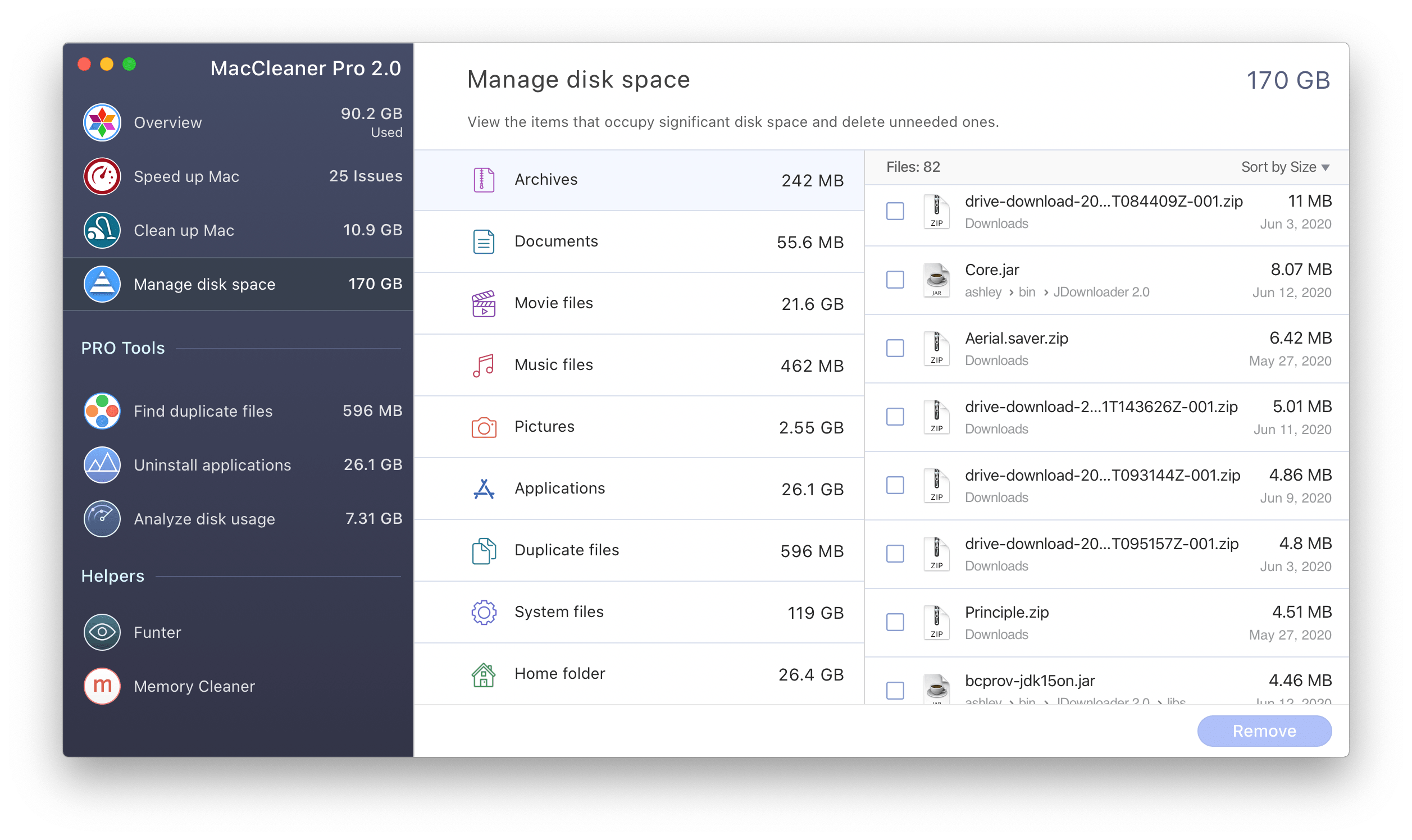


- HOW TO MANAGE SPACE ON MAC HOW TO
- HOW TO MANAGE SPACE ON MAC ARCHIVE
- HOW TO MANAGE SPACE ON MAC DOWNLOAD
- HOW TO MANAGE SPACE ON MAC FREE
One of the easiest ways is to search through your files for anything that takes up too much space, then take it all to the trash.
HOW TO MANAGE SPACE ON MAC HOW TO
In this article, we cover how to check storage space on Mac, and most importantly, how to fix the amount of space you have.
HOW TO MANAGE SPACE ON MAC FREE
So before that happens, now is the time to free up some much-needed storage on a Mac. If you keep ignoring your Mac slowing down and overheating, sooner or later, you are going to get a “Your disk is almost full” error. And of course, making room for anything else, whether it’s a file you need to save, a new app, or a game you want to download, might prove difficult. When a Mac gets too full, it can slow processing times down. But to help you do it all by yourself, we’ve gathered our best ideas and solutions below.
HOW TO MANAGE SPACE ON MAC DOWNLOAD
You can do the same in other browsers as well, Chrome, Firefox etc.So here's a tip for you: Download CleanMyMac to quickly solve some of the issues mentioned in this article.

If you are using Safari, you can do this in Safari by clicking Safari > Reset Safari. Clear your browser’s cacheĬlearing the cache could free space on your Mac. Download and install, if you want to run these maintenance scripts. Use third party utilities like MainMenu or similar others can help you. You may clean up a variety of System logs and temporary files to increase your Mac’s disk space. Clean up temporary files, system caches and logs
HOW TO MANAGE SPACE ON MAC ARCHIVE
Then control-click on this folder and select “ Create Archive of ‘Inbox.mbox‘” then delete the messages from Mail.Ĩ.
If you want to archive your emails, launch the Mail app, select a folder to archive, e.g. To compress items, simple choose a file to compress and press Control + Click then choose Compress. 50MB) and find items that are larger than 50MB. Select Finder > Go > Home > File > Find then open the Kind menu, then select Other. Here is how you can locate large files so you can compress: You may want to compress your files because compressed files take up less storage space. You may want to consider moving items (such as photos, large files, movies, etc.) to another disk, such as an external drive, USB drive, DVD, or cloud storage. If you want to remove other apps, drag the app icon to the trash then empty the trash. If you want to delete/uninstall an app that you purchased from the Mac App Store, open Launchpad then press and hold down the app icon that you want to remove, when they jiggle, click the delete (x) button. Open your Applications folder and delete any apps that you no longer use. For instance you may want to delete the disk image (.dmg) files. And drag any item you do not need to the Trash then empty the trash. First check to make sure that you do not need any of these items. iMovie: click File > Move to Trash or File > Move Rejected Clips to Trash.Īnything you download from the Internet are stored in the Downloads folder. iPhoto: click iPhoto > Empty iPhoto Trash. (instead of deleting, you may also consider archiving your email, see #7: Compress your items below) Mail: Click Mailbox > Erase Deleted Items > In All Accounts, and Mailbox > Erase Junk Mail. So you may want to empty their trash too. Then empty your trash by selecting Empty Trash from the Finder menu.Īlso note that some applications, such as iPhoto, iMovie and Mail, have their own Trash. Move files you do not need to the Trash or select an item you want to delete and press Command + Delete. To find out more about Optimize Storage, read our post How to Use Optimize Storage on Mac to Gain Back Hard Drive Space. To access this utility, go to Apple menu > About This Mac > Storage > Manage… Open Disk Utility ( Finder > Applications > Utilities > Disk Utility), then click your disk then click info, as seen in the following screen shot:Īpple has provided a utility called “Optimize Storage” that is built-in to the macOS. Clean up temporary files, system caches and logsġ.







 0 kommentar(er)
0 kommentar(er)
